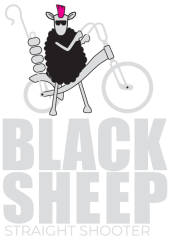I had heard on a podcast a long time ago about breathwork benefits and extreme feats of mind over matter through guys like Wimhof bringing the skill to the public in recent times. That led me to searching out an audiobook I have listened to a few times now – Breath, by James Nestor. It is about the author overcoming severe asthma through massive study into breathwork practices utilizing quite scientific and non-scientific methods after having travelling and speaking to masters all over the world. It is well-narrated and I enjoyed it so much that I bought the softcover for the bookshelf too. The main takeaway for me was to breathe through your nose and more shallowly. The CO2 balance is key. There are a myriad of different types of breathwork for different purposes, I would recommend this book if you are curious or have been exposed to something similar and want to follow up.
Recently I found a Zen group locally whilst looking for guided breathwork facilitators and groups. When I reached out to this local Zen facilitator, he said it was a group who came together on a Sunday morning to chant some sutras and then have a couple of 25 minute meditations, followed by an opportunity to share or ask questions. The group is small, friendly and welcoming and is open to all regardless of beliefs, religion or otherwise. Sounded good to me.
I arrived a couple of minutes early, took my shoes and socks off, came in and said g’day, then turned my phone off. I immediately sensed that that was the right thing to do. Six people were sitting with good posture on chairs or cushions around a nice rug, with candles and incense and they already seemed to be in the zone. It was a nice, well decorated purposeful space in a very quiet neighbourhood. I was handed a sutra chanting book and given some pointers about posture and told to follow along. The chanting monotone was with a flat, constant cadence with the use of commas only a loose guide. Quite a bit of the script was not in English, but I never had my spidey senses prick up to let on that I was saying anything untoward.
Next was about 25 minutes of quiet with everyone’s eyes closed and being very still. I have sat for 5hrs at a time in the bush with a compound bow waiting for a deer to walk past quietly on many occasions. This was very different – no pulling the binoculars up to scan the tree line, no looking towards what bird made what sound, no getting comfortable or stretching and no sounds of the bush. That was the immediate biggest thing for me in this Zen space – almost no ambient sound. This bought my tinnitus well to the fore and was a constant reminder of my exposure to occupational industrial noise, shooting, music scene of my youth and helicopters. Later, when a screen door was opened, the sound of a garden feature waterfall was quite loud (and very peaceful) and nice to have a reprieve from the ringing.
In-between meditations was a couple of very slow walks around the central mat with downward gaze. I found it difficult to walk so slow as it was quite unnatural to me. I normally walk very quickly and most people struggle to keep up, it’s just how I am. In this instance I found widening my stance beneficial for balance and being very deliberate with keeping my weight over my centre. It took about 30 seconds for me to think and then start practicing a roll step used for stalking in hunting. Heel first, rolling along the outer edge of the foot, then onto the ball just before the weight shifts over the straight / slightly bent leg. It’s good to bend the knees gently and lower your centre of balance just a tad. This will break twigs slower and if done in bare feet or socks, help feel out and get a sense for what is going to make way less noise. The downward gaze is not good for balance – ask anyone who has learnt to ride a motorcycle or done any performance riding. You go where you look. Balance comes from a natural horizontal reference and your ears being at a very similar horizontal height. In hunting, I feel like utilising vision and having your eyes up to be more beneficial than looking down to try and be quiet. A game animal can disappear just as quickly as it appears. Next time you are out field, have a friend creep up from behind and advance on you whilst snapping twigs and raise your hand every time you think you hear a snap – you will be very surprised what you think you hear and actually hear. If you have ever been out in your sit spot whilst hunting well before dawn you will have realised how much the bush comes noisily alive and really is a cacophony compared to before dawn. Sound travels much further at night because of air temperature and there is less wildlife awake who feel the need to communicate. Australia’s bird life out bush is mega compared to overseas – a few overseas hunters visiting have noted this. Birds give noisy warnings all the time – pay attention and get a few seconds heads-up to what is on the move. Whilst talking to a hunting partner, apparently just a lowered voice carries best over short distance whilst trying to be quiet but I have found a whisper to be much more intelligible with way less repeating necessary. You get most of the sibilance, inflection and intonation in the upper presence range of voice in a whisper when trying to be sneaky. Bass travels longer distances than treble. Think the sound of doof doof in a car well before you hear the tires sound.
Regarding vision habits for looking for game you need to look around unconventionally. Typically, most western societies would read a page from top to bottom, left to right. We don’t have to look at every letter then spell out the word, we just recognize the word and move on. We also recognise words that normally fit together. This is why we would skip over seeing things in the bush if looking left to right. However, if you scan right to left, this is less normal and there is a micro pause. This pause will make our mind try and process better what we have actually seen, thus not assume what we see, which will be accentuated if something is out of place and stands out. Same as reading a page bottom to top, if we deliberately scan our foreground, then middle ground, then far ground we will also process better what we have seen. I remember the old 5 S’s and M from infantry school. Silhouette, spacing, shape, shine / sheen, speed and movement. These are triggers to our subconscious which will make things seem out of the ordinary. For instance when looking for a red deer it would be a horizontal-ish line for it’s back, straight-ish lines upward for the legs, a dark brown reddish colour about human chest height, and antler tips with maybe ear and tail twitches. The red deer coat will pop in direct sunlight and the rest of the coat in shadow will dissolve. Also, don’t just use your own eyes and ears – look to the rest of the local fauna. A mob of kangaroos has many eyes on lookout. Kangaroos tend to get weird when they see a deer or fox and their posture changes and most of the mob give attention in the same direction. Look the same way and find the non-native animal somewhere nearby. Wallabies are different in that they don’t get weirded out at all. Where there’s wallabies there’s deer. I have personally had two wallabies hop to within a couple of metres of me when I was waiting for the last of the life to drain out of a red deer I had shot with a bow. Two other bucks came up to this lying down buck I had shot a few minutes earlier about 30m away and started fighting it. They saw the opportunity for a pecking order hierarchy change and capitalized. Nature is not fair, it is wild and savage. The natural order of things is worn out teeth and an infection or gut parasite with a predator eating them alive or dehydration leading to slow death. The two wallabies next to me seemed uninterested in the melee and left of their own accord shortly after.
The point of the Zen walking exercise was to clear the mind, be quiet and meditate and be present – as a newbie I kind of missed the point. However-it was great practice for stalking. Most people are uncomfortable doing nothing and struggle actually doing it well.
In the later quiet sitting sessions, the facilitator gentleman talked through meditating with guidance on why and how to meditate and I started to get the point a bit more. I fidgeted less and was almost fatigued at being so still, but intermittently present. I felt my mind wander and had to pull myself back quite often. This is why it is called mediation practice I guess, because it is a challenge to be hyper present and I’d say is otherwise a very perishable skill.
Most people seek comfort in society today. Airconditioning in the car and office, comfy couch at home and comfortable shoes to walk in. If they get bored after 2 minutes of not being stimulated or being busy, out comes the smartphone for entertainment. It’s sad but some people don’t want to be left alone with their thoughts, it’s uncomfortable. They need a distraction to stop themselves having to deal with their own shit. It is mild pain avoidance. A book called ‘The Comfort Crisis’ by Michael Easter deals with this subject very well.
Until getting a taste of Zen meditation, I hadn’t really sat completely still with eyes closed and concentrated on just my breathing – pretty much ever.
Throughout the sitting meditation and walking meditation was some sound bowl chimes and wooden clacks which gave cues that I picked up on after a couple of times. They added to the experience.
A takeaway form the Zen experience was that we are often very busy and almost never take the time to be fully present. This reminds me of a quote – “wherever you are, be all there”. We are stimulated by busyness and technology almost all day. If we ever actually pay attention to our breath, even just the sound or speed of it, it is usually fleeting. Silence doesn’t always come until we are trying to go to sleep. I have two little kids and my house is always noisy, so this was very cathartic for me. Afterward the question session was enlightening and I recommend it to everyone to give it a go.
I’ll go back.
BLACKSHEEPSTRAIGHTSHOOTER


